EV Startup
MG Motor Revolutionizes India’s EV Market with Affordable Comet Mini and Battery Rental Strategy
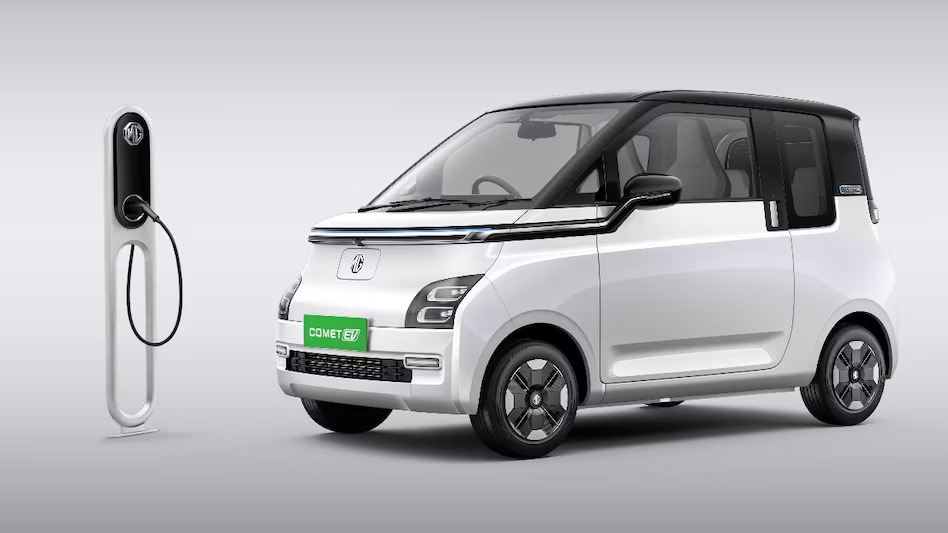
JSW MG Motor India, a joint venture between the JSW Group and China’s SAIC Motor, has made a bold move to lower the cost of electric vehicles (EVs) in India. A new pricing model was recently introduced with the Comet Mini EV, launched at Rs 4.99 lakh. This initiative is part of the company’s innovative Battery-as-a-Service (BaaS) program. The BaaS separates the battery cost from the vehicle price, allowing customers to pay for battery use based on kilometers driven, significantly lowering upfront costs.
Battery-as-a-Service (BaaS) Program
The BaaS program provides flexibility by offering an alternative to traditional battery ownership. The battery can now be rented, greatly reducing the vehicle’s initial price. For the Comet Mini, battery rentals are available starting at Rs 2.5/km, while for the ZS EV, the cost begins at Rs 4.5/km. Users are also required to cover charging costs at Rs 1/km. The pay-per-kilometer model simplifies cost management for users, offering them lower upfront expenses.
Flexible Ownership Options
Despite the BaaS program, buyers still have the option to purchase the vehicle with the battery included. This allows customers to choose between rental or ownership. Additionally, JSW MG Motor offers a 60% buyback value after three years, providing extra financial security for buyers. This makes the EV switch even more attractive to potential customers.
Evolution of BaaS in India
The BaaS model was first introduced with the Windsor EV, priced at Rs 9.99 lakh, with a Rs 3.5/km battery rental. However, Windsor EV buyers were required to make a minimum monthly payment for 1,500 km, which came to Rs 5,250 per month. This earlier experience allowed the company to refine the BaaS model, leading to a more flexible and cost-effective version for the Comet Mini and ZS EV.
The Comet Mini is targeted at urban drivers looking for an affordable EV, while the ZS EV caters to families seeking a more premium electric vehicle.
Boosting EV Adoption in India
The BaaS program is expected to drive EV adoption in India. The high upfront cost has been a major barrier to EV ownership in the country. By separating battery costs and introducing rentals, JSW MG Motor has made EVs more accessible. The lower entry price of the Comet Mini, coupled with flexible battery rental, appeals to first-time EV buyers and those looking for affordable urban transportation. The ZS EV caters to families and professionals seeking a premium electric vehicle.
According to Satinder Singh Bajwa, Chief Commercial Officer at JSW MG Motor India, the BaaS model has created a platform for easy EV ownership, revolutionizing the Indian market. “With BaaS, we have created a platform for easy ownership, making our EVs more accessible than ever. I am confident this unique model will further boost EV adoption in the country,” he said.
Financial Accessibility
Financial accessibility has been ensured through partnerships with Bajaj Finserv and Hero Fincorp. These collaborations allow customers to easily manage their battery payments and financing. By offering tailored financing options, JSW MG Motor has made EV ownership even more affordable. The company’s banking partners will handle the additional payments for battery rental and charging costs seamlessly. This financial flexibility is expected to encourage more customers to switch to EVs without worrying about the upfront expenses.
The Future of Electric Vehicles in India
The Comet Mini’s low price and the BaaS model represent a significant step toward India’s push for green transportation. The government’s promotion of electric vehicle adoption has been hampered by the high cost of EVs, but JSW MG Motor’s strategy addresses this challenge. By lowering the entry barrier, EV ownership becomes a possibility for a larger segment of the population.
As the demand for affordable, eco-friendly transport rises, JSW MG Motor’s approach could inspire other automakers to adopt similar pricing models. The BaaS program may become a game-changer in the EV market by offering customers the benefits of electric vehicles without the heavy upfront cost of battery ownership.
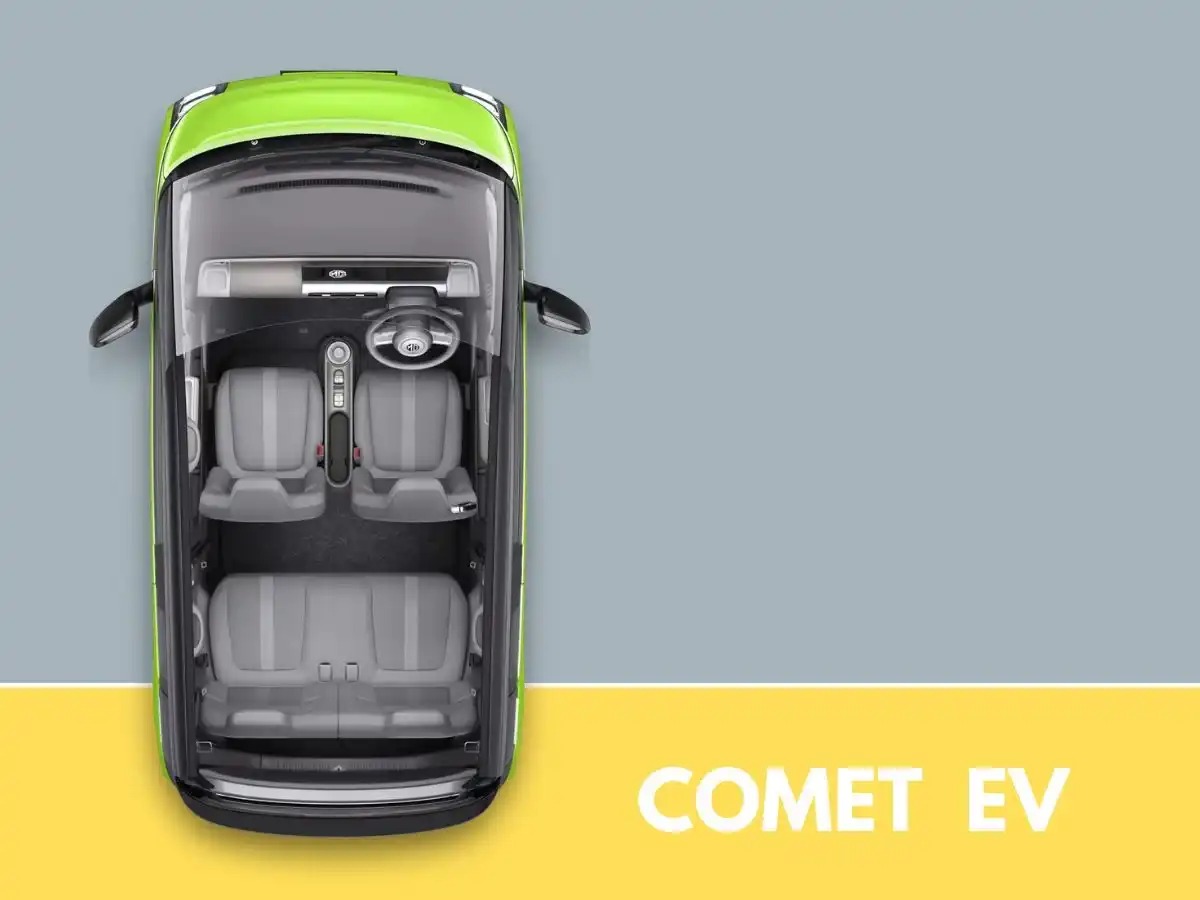
MG Comet Mini EV
Conclusion
The BaaS model introduced by JSW MG Motor is poised to transform the Indian electric vehicle market by making EVs more affordable and accessible. The Comet Mini, with its Rs 4.99 lakh entry price, and the ZS EV with its reduced pricing, are set to attract a new wave of EV buyers. By separating battery costs from vehicle prices and providing flexible rental options, JSW MG Motor is removing a key barrier to electric vehicle adoption in India.
With a 60% buyback value, flexible financing, and a simplified payment structure, the BaaS program offers a compelling alternative to traditional EV ownership models. As the company continues to innovate, the future of electric vehicles in India looks bright.
Article By
Prashant Sharma
Blog
The Tata Sierra EV: The Return of a Legend, This Time Electric
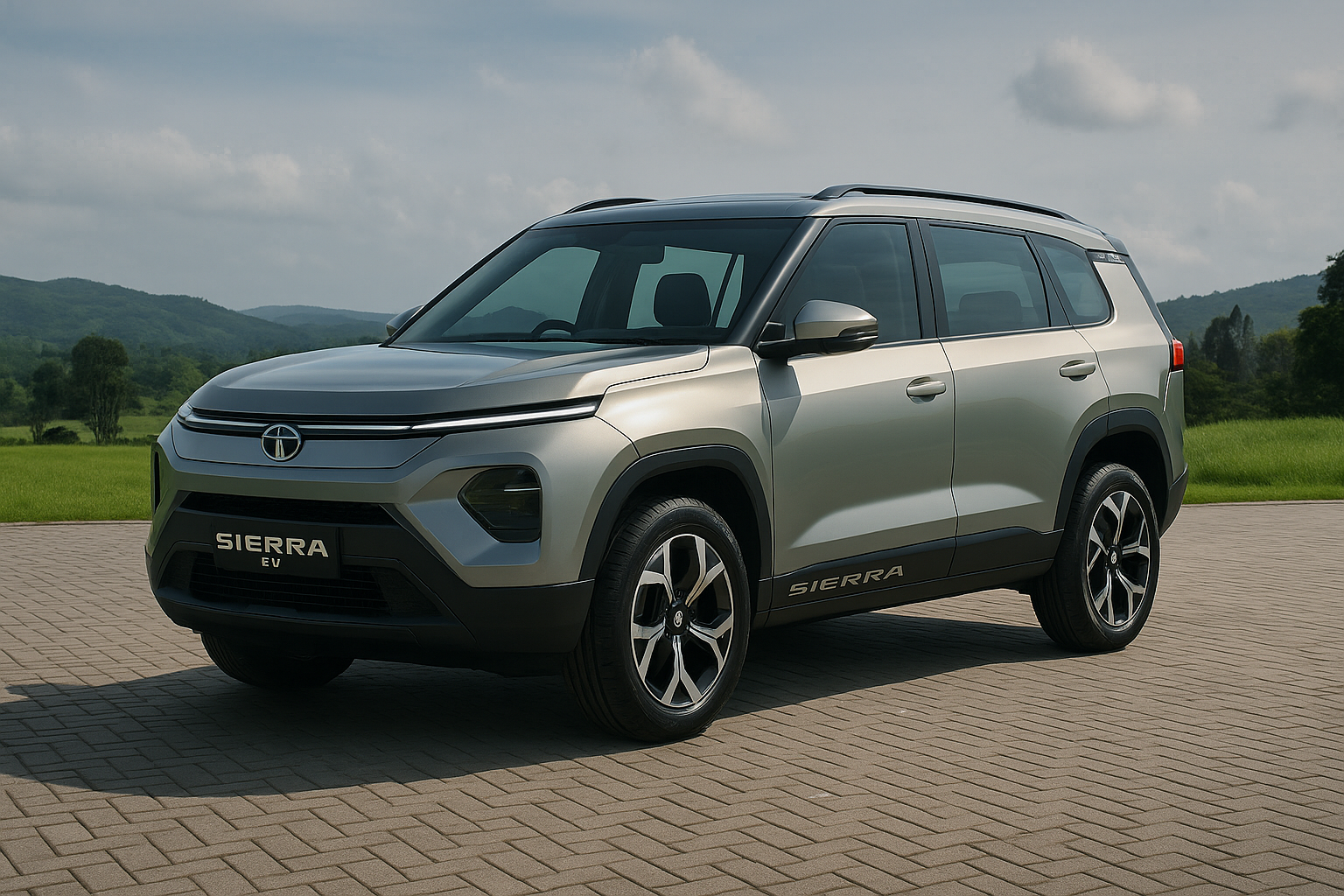
So, if you’ve been around for a while, you probably remember the Tata Sierra, right? It was one of those iconic cars from the 90s — rugged, bold, and perfect for anyone who loved hitting the road. Well, guess what? Tata Motors is bringing back the Sierra in 2025 or 2026, but this time, it will be electric. That’s right — the Tata Sierra EV is coming, and people are buzzing with excitement about it.
If you loved the Sierra back in the day, you’ll be even more excited about its electric makeover. This isn’t just a revamped version of the old model; it’s a whole new take on an iconic vehicle, packed with all the benefits of modern electric technology. Let’s dive into what makes the Sierra EV such a big deal.
What’s Special About the Tata Sierra EV?
1. The Classic Look, Now with Electric Power
The original Tata Sierra was renowned for its rugged, adventure-ready design, and from what we know so far, the Sierra EV is expected to retain that classic, bold look. The tough exterior, spacious interior, and high ground clearance will still be there, but the electric twist means it’s going to be smoother and more environmentally friendly.
We can expect the Sierra EV to have that same adventurous vibe while incorporating all the modern features that come with electric mobility. Whether you’re heading to the mountains for a weekend trip or just running errands in the city, the Sierra EV will handle it with style and ease.
2. Range That Makes It Practical for Long Drives
When it comes to electric vehicles, the range is always a big question. Luckily, Tata is working hard to make sure the Sierra EV won’t leave you stuck looking for a charging point every 100 km. Early reports suggest that the Sierra EV will likely have a range of 400 km or more on a single charge. This means you can enjoy those long drives without constantly worrying about where the next charging station is.
Plus, with fast-charging capabilities, you won’t have to waste hours waiting for the battery to fill up. It’s all about making the EV experience as convenient and hassle-free as possible.
3. Packed with Tech and Features
Now, we all love a car that’s not just about performance but also about comfort and convenience. The Sierra EV is expected to be loaded with all the tech features that make modern driving easier and more enjoyable.
We’re talking about smart navigation, driver assistance features, touchscreen infotainment systems, and even wireless charging. And since the Sierra EV will be electric, it’ll be packed with all those cool features we’ve come to expect from electric cars — like regenerative braking, smart battery management, and more.
Why the Tata Sierra EV Will Appeal to You
So, why should you be excited about the Sierra EV? Here’s the thing: Tata is making electric vehicles that aren’t just eco-friendly; they’re also practical and affordable.
The Sierra EV combines the ruggedness of the original Sierra with all the benefits of driving electric. Whether you’re someone who loves adventure, a family who needs extra space, or just someone looking for a solid, eco-friendly ride, the Sierra EV is set to tick all the right boxes.
What Does This Mean for the Electric Car Market?
The Sierra EV isn’t just a cool new car; it’s a part of the bigger picture for Tata Motors. The company is fully invested in the electric vehicle market, and the Sierra EV is one of the first in what will likely be a long line of affordable, stylish electric cars.
With more and more people in India looking for sustainable alternatives to petrol and diesel, the Sierra EV will offer an affordable electric option that doesn’t compromise on performance, space, or style. As the government pushes for greener mobility, Tata is paving the way for the future of electric SUVs in India.
What Can We Expect from Tata in the Future?
The Sierra EV is just one of many electric vehicles Tata has in the pipeline. We’ve already seen the success of the Nexon EV, and now Tata is ready to push the envelope even further. The Sierra EV will likely set the tone for what’s to come in Tata’s electric SUV lineup.
If the Sierra EV is anything like the Nexon EV, we can expect Tata to keep improving and making electric vehicles that are affordable, practical, and full of modern features.
The Future of the Tata Sierra EV Looks Bright
We’re still a few years away from the official launch of the Sierra EV, but the excitement surrounding this electric SUV is already palpable. With its rugged design, impressive range, and smart features, the Sierra EV is going to be a real competitor in the electric SUV market.
The Tata Sierra EV promises to be more than just a cool electric car; it’s part of a bigger movement toward greener, more sustainable driving. For anyone looking for a reliable, affordable electric SUV, the Sierra EV could very well be the car that leads the charge.
Article By
Sourabh Gupta
Ev battery
Mahindra Expands EV Portfolio with the BE 07: A New Era of Electric Mobility
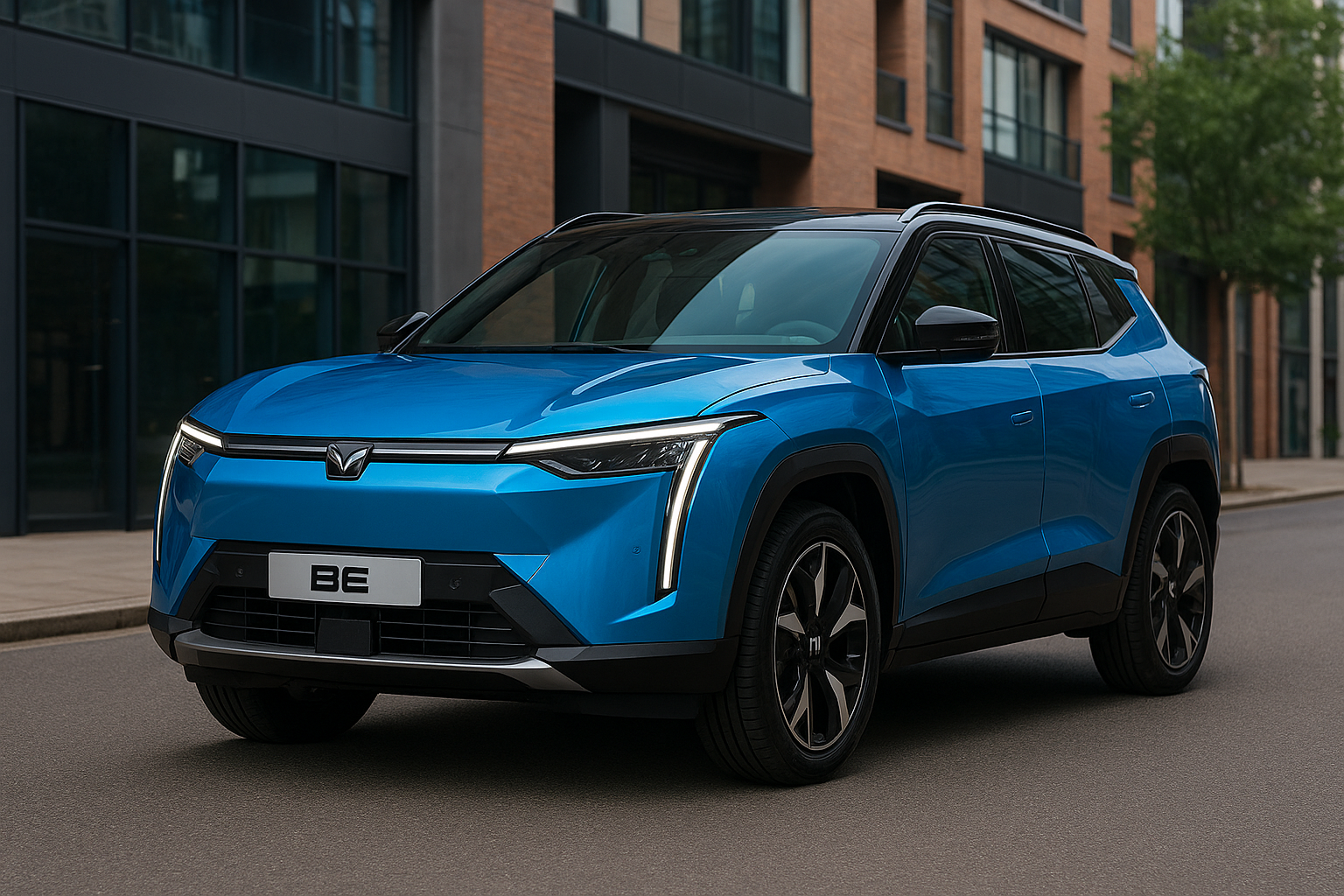
Mahindra’s New Electric SUV: The BE 07 is Here to Make a Splash
Mahindra’s been making some big moves lately, and if you’re a fan of SUVs, you’re going to want to pay attention. The BE 07, Mahindra’s upcoming electric SUV, is creating a lot of buzz in the auto world. Expected to roll out in 2025 or 2026, this electric ride is set to change how we think about electric vehicles (EVs) in India.
We all know Mahindra is famous for its tough, reliable SUVs. The BE 07 will be no different, but it’s got a twist — it’s electric. So, whether you’re looking for an eco-friendly car that still packs a punch or you’re just tired of rising fuel prices, this electric SUV might be exactly what you’ve been waiting for.
Why the BE 07 is Such a Big Deal
The BE 07 is more than just a regular SUV — it’s electric, which means it’s a step forward in Mahindra’s push to make green vehicles the norm. Here’s why people are so excited about it:
1. A Fresh, Modern Look
We all know Mahindra is famous for making rugged SUVs, and the BE 07 keeps that vibe alive. But it’s also got a more modern look that screams future-ready. With sleek lines and a sporty design, it’s got that futuristic appeal, but with all the muscle you’d expect from an SUV.
Whether you’re using it for city drives or heading out on a road trip, the BE 07 will stand out wherever you go.
2. Great Range for Long Drives
One of the things people are most worried about with electric cars is range anxiety — basically, how far can you go before needing a charge? Mahindra is addressing this with the BE 07, which is expected to give you a solid 400+ km on a full charge. That means you can take it on longer trips without the stress of constantly needing to find a charging station. Whether it’s a weekend getaway or a daily commute, this car’s range is more than enough.
And with fast-charging capabilities, you won’t be stuck waiting hours for a charge. Quick and efficient charging will make long drives a breeze.
Tech and Features: It’s Got Everything You Need
Electric cars are all about smart technology, and the BE 07 delivers. The car comes with all the modern features you’d expect from a high-end SUV, but with an electric twist. Expect a huge touchscreen infotainment system, smart connectivity, and advanced driver-assistance features to make your driving experience as smooth as possible.
3. Smart Features for a Smooth Drive
If you’re someone who loves having the latest gadgets in your car, the BE 07 will make you happy. It’ll have features like adaptive cruise control, lane-keeping assist, and emergency braking. These features not only make driving safer but also less stressful, especially on highways or during long drives.
The infotainment system will keep you connected to your music, calls, and navigation, so you’re never without what you need. Plus, all of this tech will be integrated into the car seamlessly, keeping everything easy to use.
Why It’s the Right Time for an Electric SUV
If you’ve been thinking about switching to electric, the BE 07 might just be the right moment. As fuel prices continue to climb, the cost of petrol and diesel is hitting us hard. But with electric vehicles, you’re looking at a much cheaper, more sustainable way to drive.
Plus, government incentives are making it easier than ever to buy an electric car. With affordable pricing and low charging costs, the BE 07 makes going green more accessible than ever before.
Who’s the BE 07 Perfect For?
This car is perfect for families, young professionals, or adventure lovers who want a car that’s tough, eco-friendly, and packed with features. If you love the idea of owning an electric SUV that’s both stylish and practical, the BE 07 is going to be a great fit. It’s spacious enough for your family, but with the kind of performance and luxury that will make every drive a pleasure.
What’s Next for Mahindra?
The BE 07 is just one of the many electric cars Mahindra plans to release. As the company continues to expand its EV portfolio, we can expect even more exciting models in the coming years. The BE 07 is just the beginning of Mahindra’s mission to revolutionize the electric vehicle market in India.
With Mahindra’s growing focus on electric mobility, the future of sustainable transportation in India is looking brighter every day. So, if you’ve been considering switching to an electric car, the BE 07 is worth keeping an eye on.
The Future of Driving Is Electric
The Mahindra BE 07 is shaping up to be an exciting, affordable, and eco-friendly option for anyone looking for an electric SUV. With great design, amazing tech, and a reliable range, it’s clear that Mahindra is stepping up its game when it comes to electric mobility.
If you’ve been thinking about making the switch to electric, the BE 07 could be the perfect vehicle for you. It’s affordable, practical, and it’s got everything you need to drive into a more sustainable future.
Article By
Sourabh Gupta
Blog
Affordable Electric Vehicles: The MG Comet EV and Tata Tiago EV Are Here to Change the Game
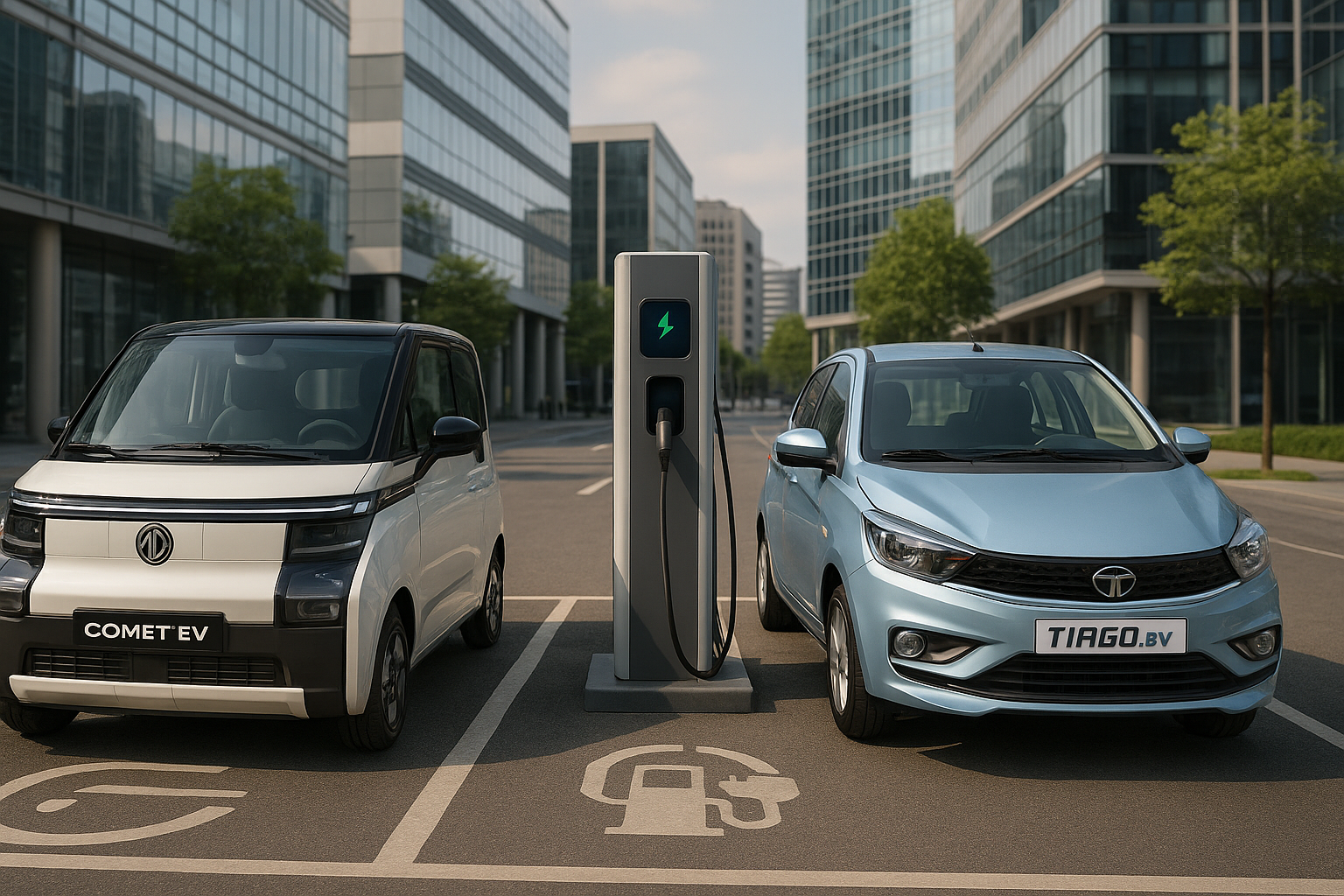
Affordable EVs: Making Electric Cars Accessible for All
The rising price of fuel has everyone looking for a better, more affordable way to drive. And while we’ve been hearing about electric vehicles (EVs) for a while, it’s only now that electric cars are becoming genuinely affordable for the everyday driver. The MG Comet EV and the Tata Tiago EV are two of the most exciting budget-friendly electric vehicles that are making the shift to electric driving much easier. Both of these models will either launch in 2025 or they’re already available in some form, and they’re here to change the way we think about driving green without spending a fortune.
The MG Comet EV: Small, Stylish, and Perfect for the City
If you live in a city, then you know how hard it can be to find a car that’s the right size, doesn’t cost a ton, and also offers the benefits of electric driving. Enter the MG Comet EV. This little car is designed for city life — compact, affordable, and super efficient.
While we don’t have all the details yet, the MG Comet EV is expected to be one of the most affordable electric cars in the market. It’s perfect for people who need a car that’s easy to park, easy to drive, and doesn’t break the bank. Plus, with a smaller battery, the Comet EV is built for urban environments where frequent charging is less of a hassle. And the best part? It’s still packed with cool features like smart connectivity and modern design, proving that an electric car doesn’t have to be boring or basic.
If you’ve been on the lookout for a car that’s practical, affordable, and eco-friendly, the MG Comet EV is shaping up to be a solid option for anyone who wants to drive green without paying luxury prices.
Tata Tiago EV: Bringing a Popular Hatchback to the Electric World
Now, if you’re looking for something that feels a bit more familiar, then the Tata Tiago EV might be your perfect fit. The Tiago has been a fan favorite in India for years — it’s affordable, reliable, and easy to drive. And now, Tata Motors is taking their well-loved hatchback and turning it into an electric car.
The Tata Tiago EV will be available in 2025, and it’s expected to offer great value for money while being an ideal choice for anyone looking to make the switch to electric without spending too much. With an affordable price tag, low maintenance costs, and impressive range, it’s a perfect solution for daily commutes, city driving, or even short road trips.
One of the best parts of the Tiago EV is how much space and comfort it offers for the price. Even though it’s an electric car, you’ll still get plenty of room to stretch out, along with features like smart infotainment, Android Auto/Apple CarPlay, and driver assistance systems to make your ride safer and more enjoyable.
Why Are Affordable EVs the Right Choice for You?
You might be wondering, why should you consider an electric vehicle? After all, the upfront cost of an EV can still seem a little daunting. But here’s the thing — EVs save you money in the long run. With petrol and diesel prices constantly on the rise, the cost of running a traditional vehicle is becoming unsustainable for many people. Electric cars, on the other hand, are cheaper to charge and cheaper to maintain.
For instance, charging an EV is much less expensive than filling up a gas tank. And with fewer moving parts in electric cars, there’s less maintenance needed compared to traditional cars. No more worrying about engine repairs, exhaust issues, or oil changes. Plus, if you add in the government incentives for buying electric vehicles, the cost of owning an EV becomes even more appealing.
A Growing EV Market: More Options Coming Your Way
The affordable EV market is expanding fast. As more car manufacturers like Tata Motors, MG, and others launch electric models, the options for consumers are growing, and the prices are getting more competitive. The MG Comet EV and Tata Tiago EV are just the beginning.
Expect to see more affordable electric cars popping up, with more models to choose from, and all at different price points. This shift will make electric driving even more accessible for people across the country.
The Charging Infrastructure Is Expanding, Too
One of the big questions people have about EVs is the charging infrastructure. If you’ve ever wondered where you’d charge your electric car, the good news is that the charging network in India is growing quickly. Cities like Delhi, Mumbai, and Bengaluru already have plenty of charging stations, and the government is working to expand this network across the country. You’ll also be able to charge your EV at home, which is a huge convenience.
EVs Are More Affordable Than Ever
The MG Comet EV and Tata Tiago EV are two excellent examples of how the electric vehicle market is evolving. These cars are affordable, practical, and eco-friendly, making them perfect for anyone who wants to make the switch to electric without spending a fortune. As the prices of fuel keep rising, electric cars like these are only going to become more attractive.
With more EV options coming in 2025 and beyond, it’s clear that electric vehicles are the future — and they’re becoming more accessible for everyone.
Article By
Sourabh Gupta
-

 Blog1 year ago
Blog1 year agoIndia’s Electric Vehicle Market Forecast to 2028 A Rapidly Growing Industry
-

 Blog12 months ago
Blog12 months agoMahindra BE 6 An Intense Move toward the Fate of Electric Versatility
-

 Blog1 year ago
Blog1 year agoTop 10 Electric Vehicles of 2024: A Comprehensive Guide
-

 EV news11 months ago
EV news11 months agoAmpere Magnus Neo Another Time of Electric Portability
-

 Blog1 year ago
Blog1 year agoTop 5 best electric vehicles Under $30,000: Affordable Choices for 2024
-

 EV news11 months ago
EV news11 months agoIndia’s EV Revolution Electric Cars to Outpace Petrol & Diesel in 2025
-

 Blog2 years ago
Blog2 years agoImpact of Electric Vehicles on the Environment and Pollution
-

 EV news1 year ago
EV news1 year agoOla Electric Offers Massive Festive Discounts on Scooters Starting at ₹50,000




